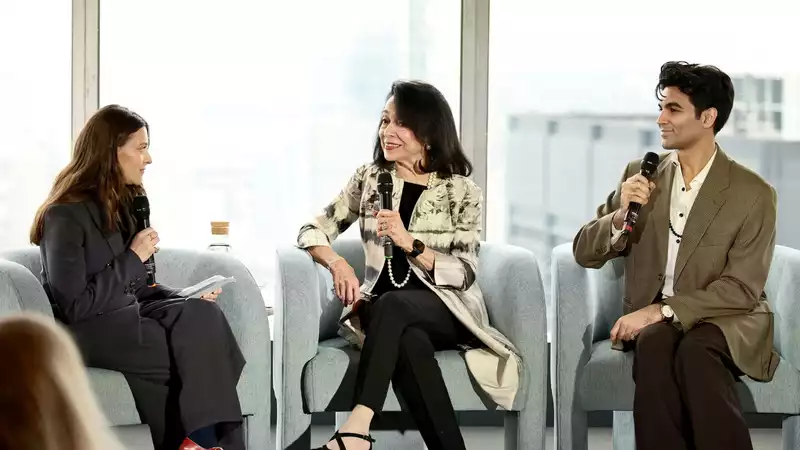
The Impact of Mentorship on Fashion Sustainability
For FIT President Dr. Joyce Brown and climate activist Saad Amer, mentoring the next generation means encouraging others to engage in tough conversations around sustainability and fashion. On the "Mentorship Mindset" panel, the two sat down with Sara Holtzman, Style Director at Marie Claire. The event is an initiative of Marie Claire and Kering to bring together experts, activists, and public figures to discuss ways to create a more environmentally friendly fashion industry and encourage viable change.
Through his work as a sustainability activist, Aamer serves as a mentor to the younger generation. For him, rethinking our entire conversation around fashion is crucial to bringing about positive change in the industry. I think we've become a world that doesn't think enough about what fashion is and what fashion means," he explains. If fashion is an expression, then what does it mean when our clothes are made by women of color who are polluting rivers, cutting down forests, destroying the atmosphere, emitting carbon, and being enslaved overseas?" By reframing the conversation around fashion and understanding the system as a whole, says Amell, we can feel empowered to make change.
Meanwhile, as president of FIT, Dr. Brown is literally mentoring the fashion industry's younger generation; at FIT, sustainability is integrated into the fashion and design curriculum as a way to educate the next generation of business and design leaders. For Dr. Brown, teaching sustainability practices to students is "part of the whole. Within our curriculum, we have to touch on design and business, the environment, and the overall impact and socio-cultural impact of design and fashion," she explained.
Mentorship in sustainability applies not only to the younger generation, but also to large corporations. 'Because the reality is that climate change is happening,' she said. Companies need to make changes now, not only to respond to new policies like the Fashion Act and the FABRIC Act, but also to respond to new consumer trends regarding sustainability.
Today, Dr. Brown added, consumers are more concerned about sustainability than ever before, and it is this attitude that is important for large corporations. Marketing, advertising, production, size, color, and textiles matter. Thanks to consumer awareness, this is a movement, and it's getting its own limelight." [But as Holzman said, sometimes the fashion and business worlds don't interact with each other. He explained, "It's about understanding that each doesn't exist in a silo." The inputs and outputs of the fashion industry, whether it be the land we use or the physical waste from the industry, are directly related to climate, and that intersectionality is what needs to be talked about, Amel said. And that intersectionality is what needs to be talked about," Dr. Brown added. [11][12] As a mentor, another way to empower people to ask hard questions about fashion choices is to open up intergenerational conversations. Because there is so much wisdom to be gained by listening to the older generation," he said. The younger generation has "tenacity" and is not willing to compromise on what they want. Amel said, "We need that at a time when so much of our system is clearly dependent on these systems of exploitation and the desire to profit at any cost."
Overall, both are optimistic about the future of fashion. Aamer recounted participating in a march across the Brooklyn Bridge with thousands of climate change activists, pointing to the event as a symbol of hope. He said, "When I saw that kind of energy and tenacity of people actually taking to the streets, organizing and mobilizing in droves, I knew that change could happen. I think all institutions, whether it's businesses, governments, or universities, are beginning to understand that."
For Dr. Brown, hope for a greener future comes from the people she works with every day: her students. She says, "It is the students and young people who give me hope and optimism. They live with a muse sitting on their shoulders to remind them of their mission and purpose," Dr. Brown explains. 'I believe that hope lies in young people who have talent, creativity, and faith, and are bound only by their own imagination.'
.
Comments